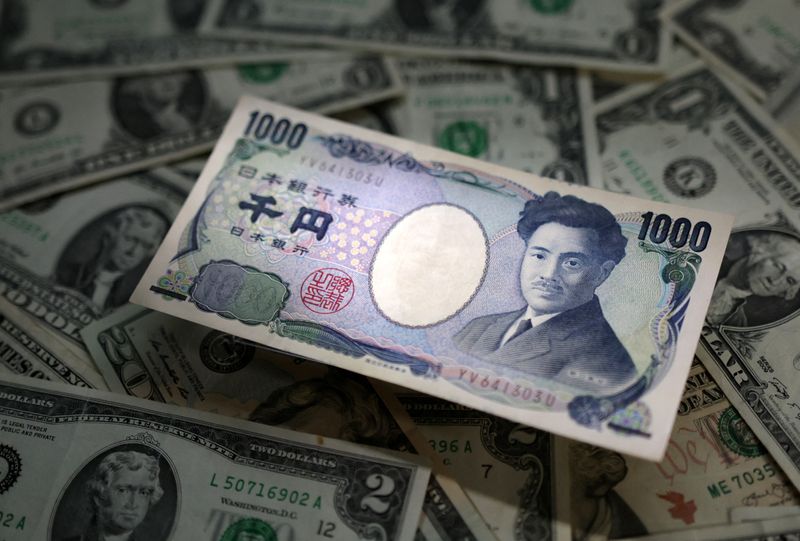
By Chuck Mikolajczak
NEW YORK (Reuters) -The dollar slipped for a second straight session, as a recent ascent lost steam, but the greenback was still on track for a fourth straight week of gains after data this week kept interest rate expectations for the Federal Reserve in check.
The Commerce Department said non-defense capital goods orders excluding aircraft, a closely watched proxy for business spending plans, jumped 0.5% last month after an unrevised 0.3% gain in August and above the 0.1% rise estimated by economists polled by Reuters.
A separate report by the University of Michigan showed October consumer sentiment rose to 70.5 from 70.1, topping the 69.0 estimate, while the one-year inflation outlook fell to 2.7% from the preliminary reading of 2.9% but in line with September’s final result.
The dollar was poised for its fourth straight week of gains, as a run of positive economic data has quieted expectations about the size and speed of the Fed’s rate cuts, which has also lifted U.S. Treasury yields. Investors are now focusing on a key government payrolls report next week.
“We had a massive recalibration in economic expectations for the U.S. and that process seems to have largely run its course, the Fed’s policy trajectory looks much more reasonable and interest rate differentials between the U.S. and other major economies are stabilizing here,” said Karl Schamotta, chief market strategist at Corpay in Toronto.
“The dollar index, which measures the greenback against a basket of currencies, shed 0.02% to 104.03, with the euro up 0.02% at $1.083.
In Europe, a survey on Friday of German business sentiment showed confidence improved more than expected this month, snapping four straight months of declines, offering hope for some respite towards the end of the year in the economy’s battle with industrial woes and soft global demand.
European Central Bank (ECB) President Christine Lagarde said the euro zone’s inflation is “well on track” to hit the European Central Bank’s 2% target next year, reiterating the bank’s most recent guidance.
The dollar has also benefited from a rise in market expectations for a victory next month by Republican candidate and former U.S. President Donald Trump, which would likely bring about inflationary policies such as tariffs.
Schamotta said that while those policies should support the dollar, that could be already priced in and their negative effects such as inflation could dampen consumer sentiment and weaken the dollar more than markets had expected two weeks ago.
Markets are pricing in a 95.6% chance for a cut of 25 basis points at the Fed’s November meeting, with a 4.4% chance of the U.S. central bank holding rates steady, according to CME’s FedWatch Tool. The market was completely pricing in a cut of at least 25 bps a month ago, with a 57.4% chance of a 50 bps cut.
Against the Japanese yen, the dollar strengthened 0.13% to 152.02. Sterling strengthened 0.13% to $1.2989.
Japanese voters were set to head to the polls on Sunday for a general election with opinion surveys showing the ruling Liberal Democratic Party (LDP) could lose its dominance that has lasted for more than a decade, possibly complicating monetary policy plans for the Bank of Japan (BOJ).

The BOJ is scheduled to meet next week and is expected to maintain ultra-low interest rates next week, and probably signal a less dovish policy outlook due to receding fears of U.S. recession – and the need to keep speculators from pushing down the yen too much.
Another potential complication for the BOJ was data that showed core inflation in Japan’s capital in October dipped below the central bank’s 2% target for the first time in five months.
This post is originally published on INVESTING.



